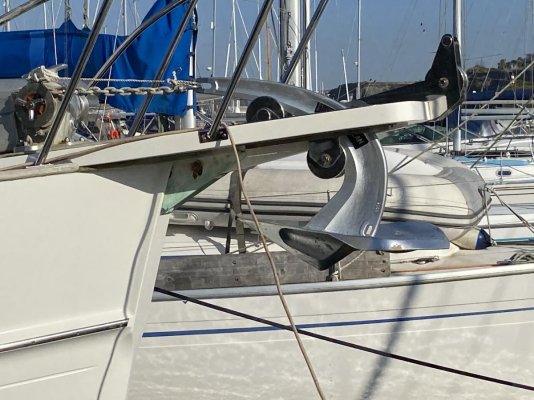diver dave
Guru
- Joined
- Jan 13, 2017
- Messages
- 2,570
- Location
- United States
- Vessel Name
- Coquina
- Vessel Make
- Lagoon 380
S
Secondly, if you are worried about total weight, why carry an all chain rode? I've always had a chain/nylon rode. Even the Spade anchor website advises against using an all chain rode. They recommend something in the 75 ft range. Others recommend about a boat length of chain and the rest nylon. It's less weight in your bow (where you don't want it) and improves anchor holding in most situations. It's also less weight for your windlass. Before I'd switch to a smaller anchor because of weight issues, I'd rather lose some of the chain.
That worked well for me on my last boat. It had a combo wildcat, and it made the steel to nylon transition painless. Sometimes had to hand manage the rope as it stacked in the locker. Current boat is all chain, and certainly now brainless to manage the chain only; but always use a V bridle now. So that's the choice; nylon thru the windlass somehow, or the extra step of installing the snubber.

